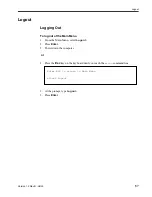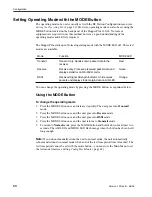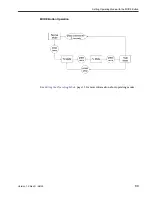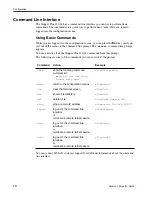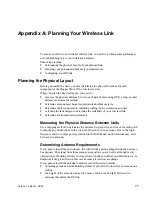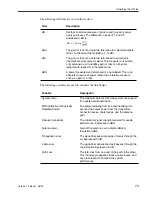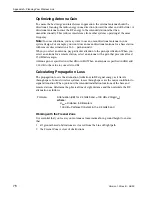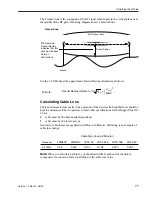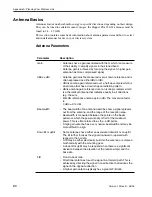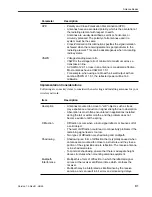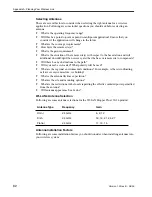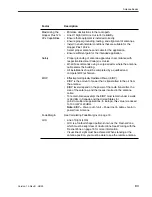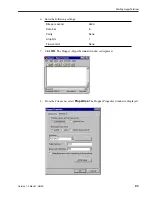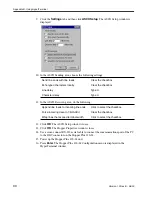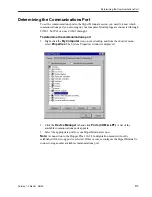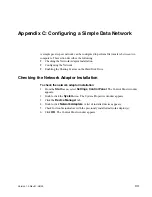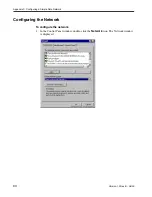
Appendix A: Planning Your Wireless Link
80
Version 1.0 Rev B - 08/00
Antenna Basics
Antennas focus and absorb radio energy in specific directions, depending on their design.
They can be tuned to certain frequency ranges; the Hopper Plus 120-24 antennas must be
tuned to 2.4 - 2.5 GHz.
This section contains some basic information about antenna parameters and how to select
and install antennas for use in your wireless system.
Antenna Parameters
Parameter
Description
Gain
• Antennas have a gain associated with them, which is a measure
of their ability to amplify signals in their tuned band.
• Antenna gain is achieved by focusing the signal. A higher gain
antenna has more compressed signal.
dBd vs. dBi
• Antenna gain must be measured over a known reference and is
often expressed as either dBd or dBi.
• dBd is antenna gain referenced over a half-wave dipole which is
an antenna that has a donut shaped radiation pattern.
• dBi is antenna gain referenced over an isotropic radiator which
is a theoretical antenna that radiates equally in all directions
(e.g. the sun).
• Wi-LAN references antenna gain in dBi. The conversion factor
is:
0 dBd = 2.14 dBi
Beamwidth
• The beamwidth of an antenna describes how a signal spreads
out from the antenna, and the range of the reception area.
• Beamwidth is measured between the points on the beam
pattern at which the power density is half of the maximum
power. This is often referred to as the -3 dB points.
• A high gain antenna has a very narrow beamwidth and may be
more difficult to align.
Downtilt or uptilt
• Some antennas have either an associated downtilt or an uptilt.
The tilt further focuses the signal downward or upward with
respect to the horizon.
• A tilt may be either electrically built into the antenna or achieved
mechanically with the mounting gear.
• A downtilt or uptilt may be required when there is a significant
deviation between the elevation of the remote site(s) and the
base site.
F/B
• Front-to-back ratio.
• Directional antennas focus the signal in a forward path. This is
achieved by directing the signal in one direction that reduces the
signal in the opposite direction.
• A higher gain antenna typically has a greater F/B ratio.


